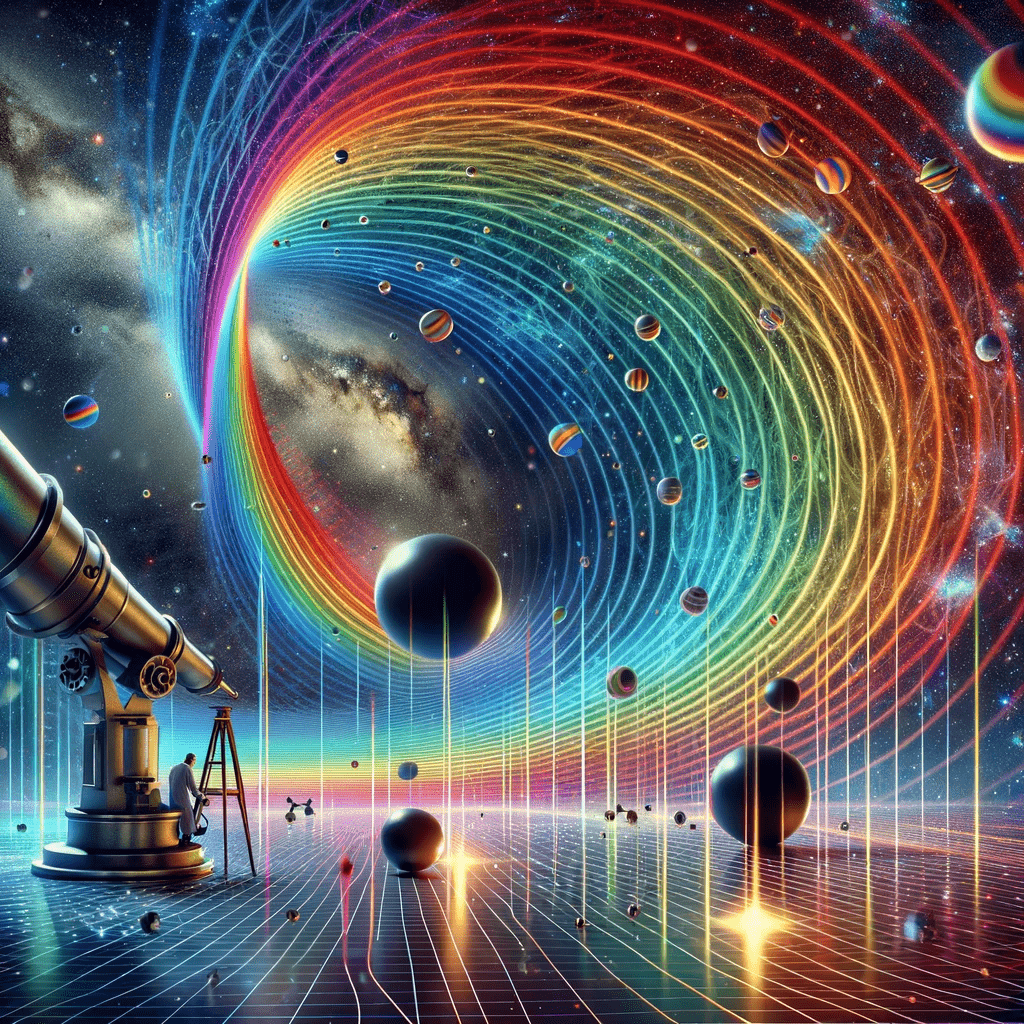Gravity’s Rainbow

Gravity’s Rainbow is a theory in theoretical physics that merges aspects of quantum mechanics with the theory of gravity. The theory of Gravity’s Rainbow was first proposed in the year 2015 by Ahmed Farag Ali, Mir Faizal, and Mohammed M. Khalil. The theory is named after Thomas Pynchon’s novel “Gravity’s Rainbow”, but the two share little in common beyond the name.
At its core, Gravity’s Rainbow proposes that the fabric of spacetime itself is affected by both the energy and the momentum of a particle moving through it, effectively creating a different ‘rainbow’ of gravity for particles at different energies. This is a significant departure from traditional views of spacetime, as proposed in Einstein’s theory of general relativity, where spacetime is affected only by mass and energy, not the energy-momentum of particles moving through it.
One of the primary motivations for developing Gravity’s Rainbow is to find a way to reconcile the apparent incompatibilities between quantum mechanics, which governs the world at the smallest scales, and general relativity, which governs the world at the largest scales. This has been a major challenge in theoretical physics for the better part of a century, and Gravity’s Rainbow represents one attempt to resolve this challenge.
- The theory suggests that the energy scale at which spacetime becomes ‘quantized’ (or broken up into discrete units, much like how matter is made up of discrete atoms) could be different for particles of different energies. This is why the theory is called ‘Gravity’s Rainbow’ — because it implies that there might be a different ‘colour’ of gravity for particles at different energies (Source: “Absence of black holes at LHC due to gravity’s rainbow”, Physics Letters B, 2015).
- If Gravity’s Rainbow is correct, it could potentially make it possible to detect mini black holes at the Large Hadron Collider (LHC), a particle accelerator located at CERN, near Geneva. These mini black holes could be a signature of extra dimensions or other universes (Source: “Quantum Gravity and Black Hole Research”, Springer, 2020).
- While Gravity’s Rainbow remains a theoretical proposition, if validated, it could help resolve some of the thorniest problems in modern physics, such as the nature of dark matter and dark energy, the mystery of quantum gravity, and the origins of the universe itself (Source: “The Universe in a Nutshell”, by Stephen Hawking).
Theoretical physics like Prof. Mir Faizal from the University of Lethbridge and Dr. Ahmed Farag Ali of Benha University in Egypt are actively researching and presenting their findings on this theory. They claim that Gravity’s Rainbow could be a critical stepping-stone towards a quantum theory of gravity.
Books such as “Quantum Gravity and Black Hole Research” by Claus Kiefer and “The Universe in a Nutshell” by Stephen Hawking have looked into the possibilities and potential implications of Gravity’s Rainbow.
The scientific community has clearly stated that any black holes created in the LHC would be minuscule and short-lived, posing no threat to the Earth or the universe.
If valid, Gravity’s Rainbow could fundamentally alter our comprehension of spacetime, suggesting that it could be affected not just by mass and energy, but also by the energy-momentum of particles moving through it. This idea, revolutionary as it may seem, paints a picture of a universe that is far more complex and nuanced than what we currently comprehend.
Moreover, Gravity’s Rainbow might open up exciting new avenues in the exploration of dark matter and dark energy, two mysterious entities that currently account for the vast majority of the universe’s mass-energy content but remain poorly understood. It could also shed light on the nature of quantum gravity, one of the most elusive concepts in theoretical physics.
To that end, ongoing research at particle accelerators like the LHC could potentially provide critical insights. The detection of miniature black holes, as predicted by the theory, would significantly bolster its credibility and usher in a new era in theoretical physics.
Gravity’s Rainbow, while currently unproven, serves as a compelling illustration of the richness and dynamism of theoretical physics.


